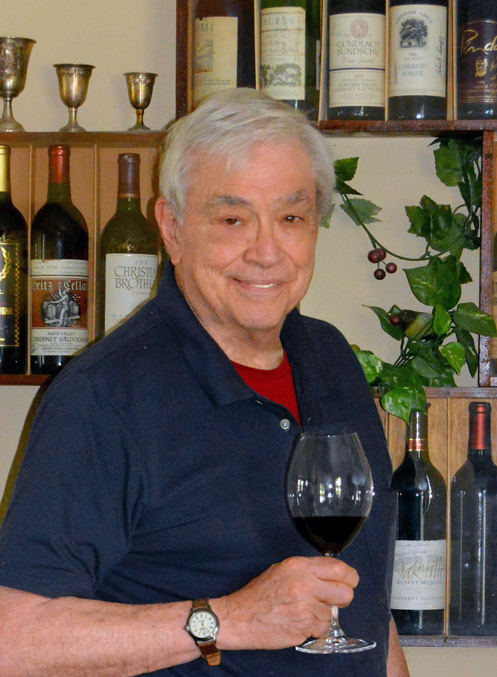As a child, winemaker Charlie Wagner attended the Liberty School, in Rutherford, California. Years later, in 1950, he built a new home and winery using wood from the original Liberty School structure. Wanting to commemorate the old schoolhouse, Charlie Wagner named his wine Liberty School and concentrated on making cabernet sauvignon wines of the highest quality. For his picture on the label he chose the image of his old school house.. The first vintage of Liberty School was produced in 1975and the winery continued to produced outstanding wines ever since.
The vineyard continued in the hands of the Wagner family until 1996 when it was purchased by Hope Family Vineyards. Hope continued Charlie Wagner’s tradition of making outstanding cabernet sauvignon’s and added chardonnay and a Meritage style wine called Cuvée (Kuvay) to the line. The Hope Family stayed true to the style that was originally created by Charlie Wagner rather than to adopt the policy of many of the wineries that purchase other wineries and bend them toward their particular style. We recently had an opportunity to sample the Liberty School’s latest releases, and they were excellent.
Liberty School 2010 Cabernet Sauvignon ($16). The grapes for this wine were chosen from selected Paso Robles Vineyards and reflect the full fruit flavor that the region if famous for. This wine is not only a beautiful California cabernet sauvignon but also a contradiction of itself. While it does glorify the typical cabernet sauvignon flavor of cranberries and big dark black berries, it does so by presenting these flavors in huge amounts. This wine can best be called “jammy” because of its almost obscene display of flavors. There is enough tannin in this wine to assure its continued improvement over the next decade. The Liberty School 2010 Cabernet Sauvignon Cabernet Sauvignon can accompany any of the traditional meat dishes that are normally reserved for the variety, but it will also fit with beef dishes prepared with sweet sauces and contrary to its aloof ancestral heritage, back yard barbecues.
Liberty School 2011 Chardonnay ($14). These grapes, came from the Central Coast wine grape growing district and were specially tended for this specific wine. The wine is mostly chardonnay with 5% viognier and 5% marsanne blended in to soften the wine. Again, some age old techniques were used to produce this wine and the finished results do show it. Intensity of flavor and aroma are the hallmarks of the Liberty School 2010 Chardonnay. Pear, peach, butterscotch and honeysuckle dominate the flavor and aroma and carry over to the long and creamy finish. There is something unusual about this wine and that is the intense aftertaste that enhances and helps to further define all of the wines elements. Please do not write this off as “just another chardonnay;” because it most definitely is not.
Liberty School 2009 Cuvée ($16).This wine could be best called a mish mach of grapes because of the use of popular grape varieties in the final blending. The Liberty School 2009 Cuvée is composed of 85% syrah backed up by 7% cabernet sauvignon, 3% petite sirah, 3% grenache and 2% viognier. Let us digress to a bit of explication. While the blended grape varieties are in small quantities, the make a definite difference to the wine and their individual properties do show up. While the syrah grape is not known for a peppery flavor, the petite sirah is and it shows up in the first taste. The viognier, while a white grape, adds a flowery element to the aroma and a softness to the finish. Take a whole the wine displays the aromas of blueberries, cherries with a hint of eucalyptus. The flavor is dominated by cranberry and plum with the afore mentioned pepper. The finish is a kaleidoscope of all of the flavors previously mention with the addition of a mineral element adding another layer of flavor. This wine could be considered the king of the backyard barbeques, replacing the often used zinfandel and able to accompany almost any meat dish.
 High Vacuum Engineer: Senior Technical Adviser and Feature Writer for Modern Photography Magazine (1967-1973), co-founder of Together Vineyards, an experimental vineyard in South Florida which was the southern most registered vineyard in the Continental United States. Co-Author of several books on Home Wine Making, Home Beer Making and Distillation of Spirits. Co-owner of Camera & Video Repair Institute in Sunrise Florida.
High Vacuum Engineer: Senior Technical Adviser and Feature Writer for Modern Photography Magazine (1967-1973), co-founder of Together Vineyards, an experimental vineyard in South Florida which was the southern most registered vineyard in the Continental United States. Co-Author of several books on Home Wine Making, Home Beer Making and Distillation of Spirits. Co-owner of Camera & Video Repair Institute in Sunrise Florida.